Lecture 32: Lazy Linked Lists
COSC 273: Parallel and Distributed Computing
Spring 2023
Annoucements
- Quiz on concurrent linked lists released today, due Friday
- Next leaderboard submission on Monday
- First leaderboad results soon
Last Time
Concurrent Linked Lists, Three Ways:
- Coarse locking
- lock the whole data structure for every operation
- Fine-grained locking
- lock individual nodes to avoid conflicts
- Optimistic locking
- search without locks, lock on find, then validate
Optimistic Insertion
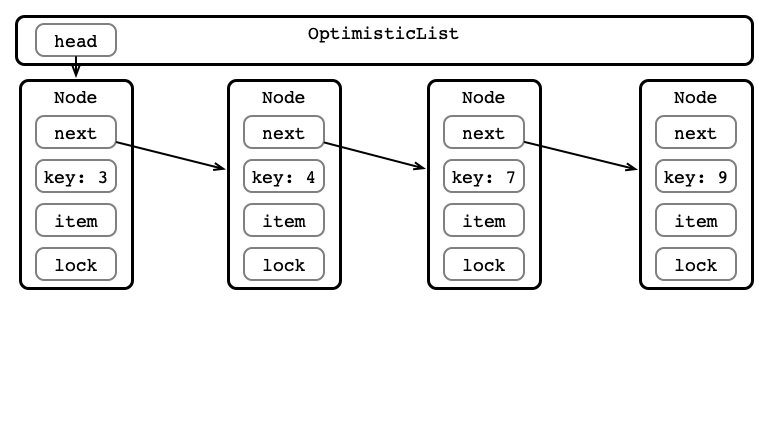
Step 1: Traverse the List
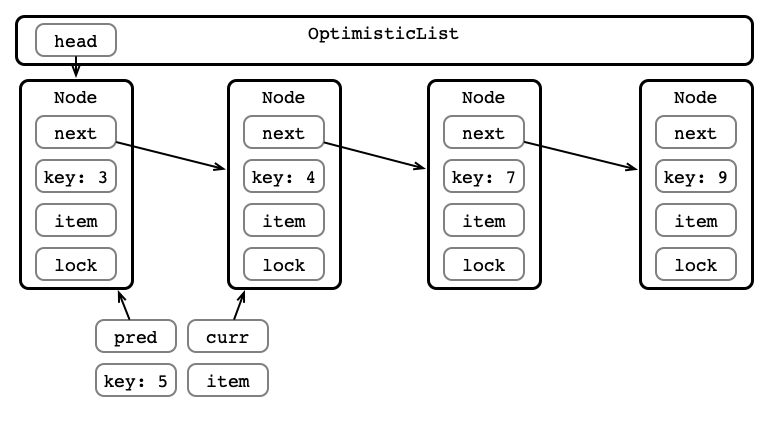
Step 1: Traverse the List
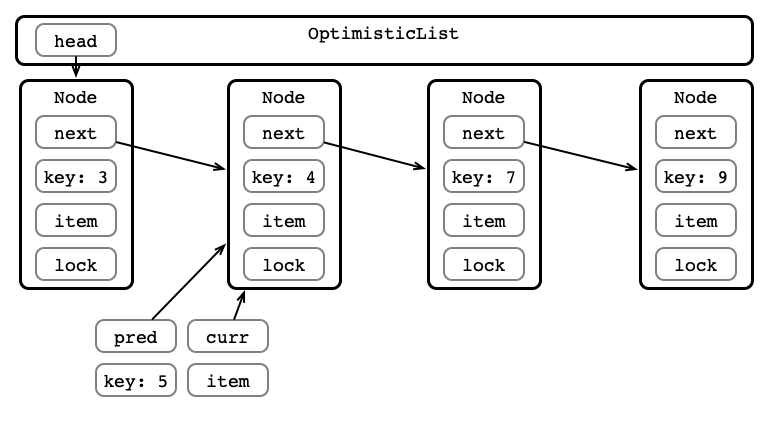
Step 1: Traverse the List
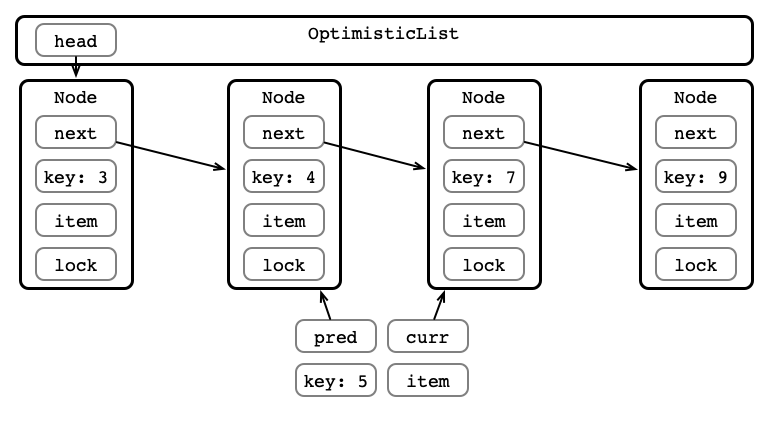
Step 2: Acquire Locks
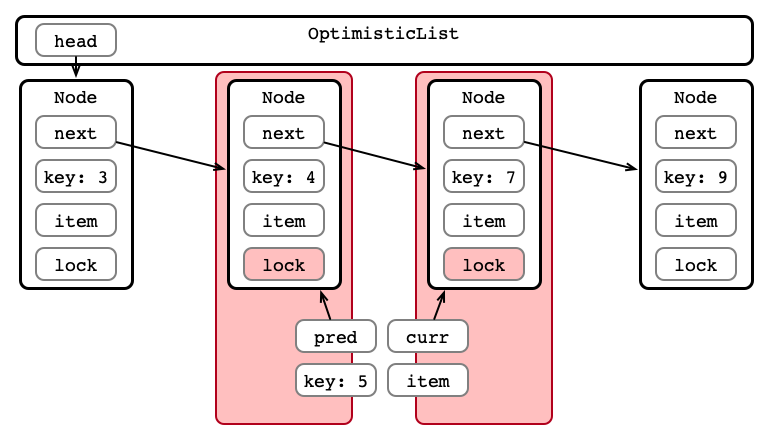
Step 3: Validate List - Traverse
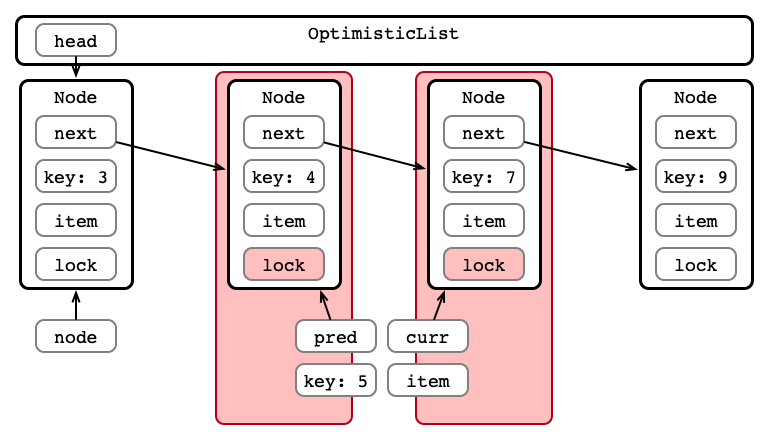
Step 3: Validate List - pred Reachable?
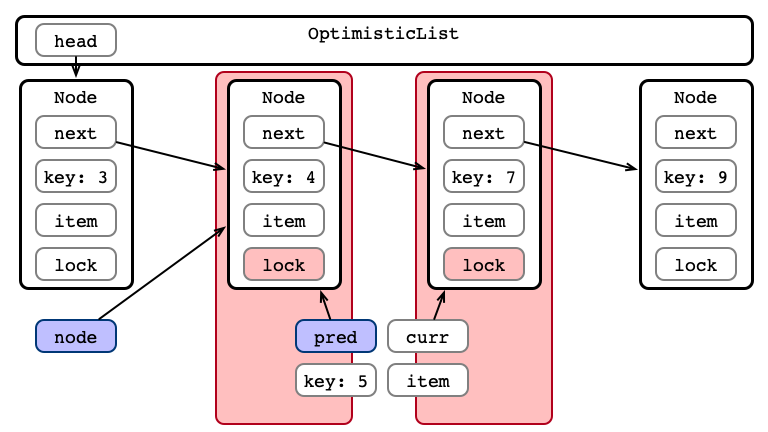
Step 3: Validate List - Is curr next?
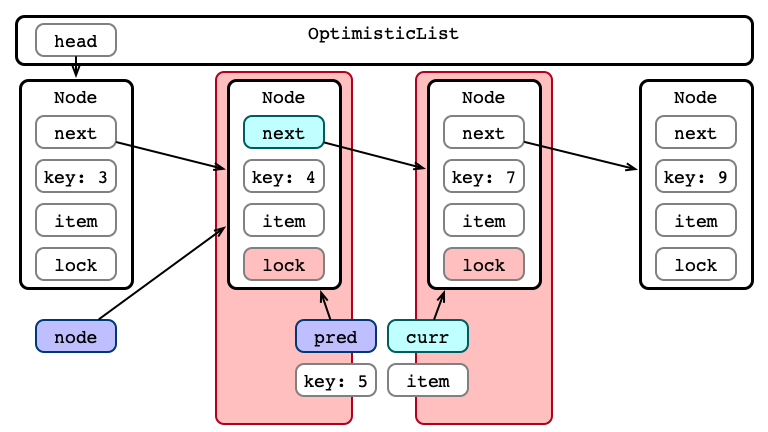
Step 4: Perform Insertion
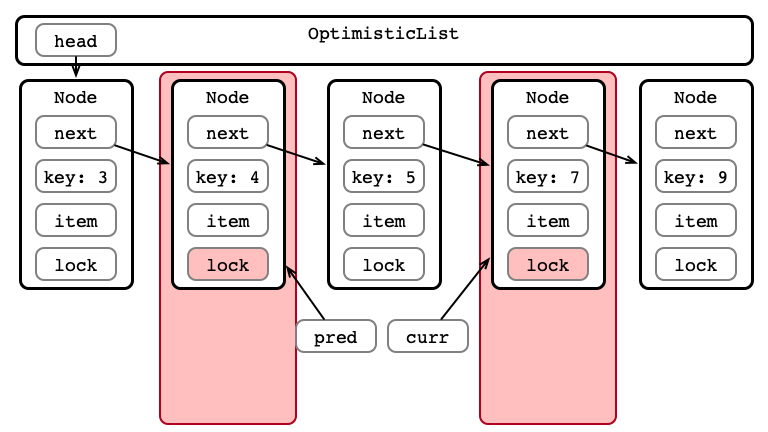
Step 5: Release Locks
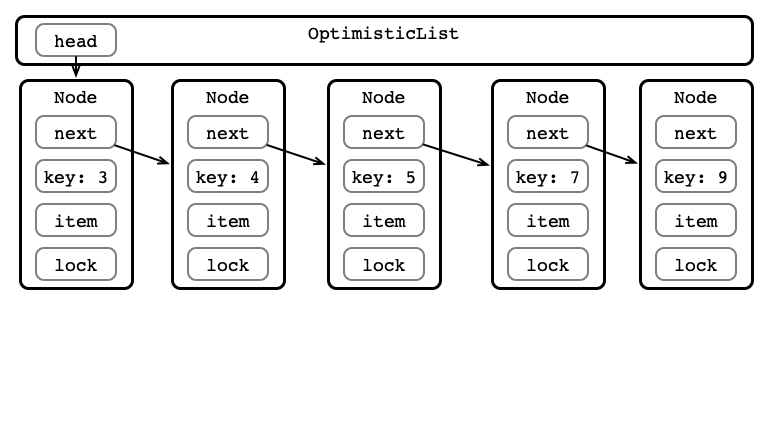
Performance v. Size, 1 Thread
Performance v. Size, 128 Threads
Time v. Threads, 8 Elements
Time v. Threads, 8,192 Elements
Coarse Time v. Threads
Fine Time v. Threads
Optimistic Time v. Threads
Further Improvement?
Question. What is undesireable about optimistic locking?
Optimism and Validation
Under best circumstances:
- validation succeeds
- likely if little contention
- still traverse the list twice
Under contention:
- all operations are blocking
- not wait-free
- contention can lead to validation failures
- not starvation-free
Observation
Operations are complicated because they consist of several steps
- hard to reason about when the operation appears to take place
- coarse/fine-grained synchronization stop other threads from seeing operations “in progress”
- optimistic synchronization may encounter “in progress” operations before locking
- validation required
Overly Optimistic?
Question. What operation(s) interfere with add/remove and how? When do we need to validate starting at the head?
Conflicting add Operations
Conflicting remove Operations
Improved Validation?
Question. How could we modify remove method to make validation more efficient?
Lazy Synchronization
A simple strategy
-
Mark a node before physical removal
- marked nodes are logically removed, still physically present
- Only marked nodes are ever removed
Validation simplified:
- Just check if nodes are marked
- No need to traverse whole list!
Lazy Operation
- Traverse without locking
- Lock relevant nodes
- Validate list
- check nodes are
- not marked
- correct relationship
- if validation fails, go back to Step 1
- check nodes are
- Perform operation
- for removal, mark node first
- Unlock nodes
Lazy Removal Illustrated
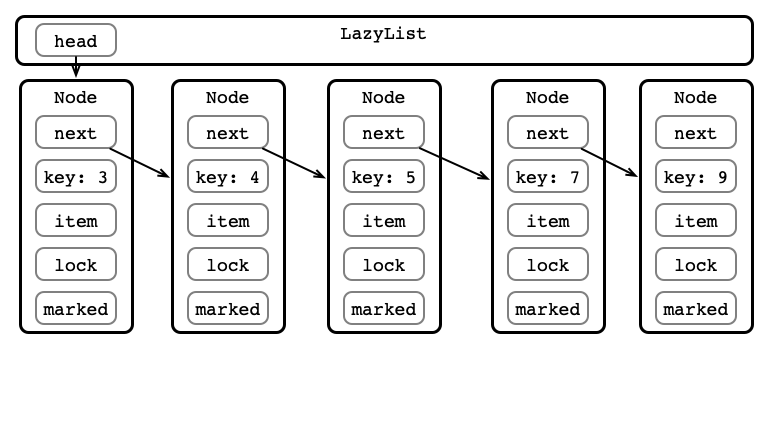
Step 1: Traverse List
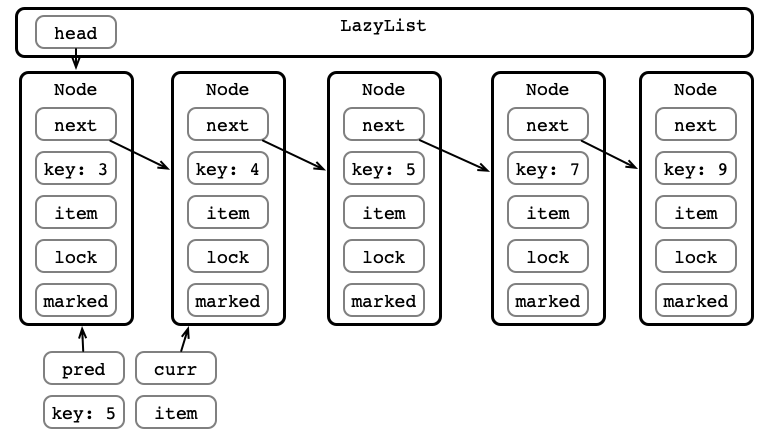
Step 1: Traverse List
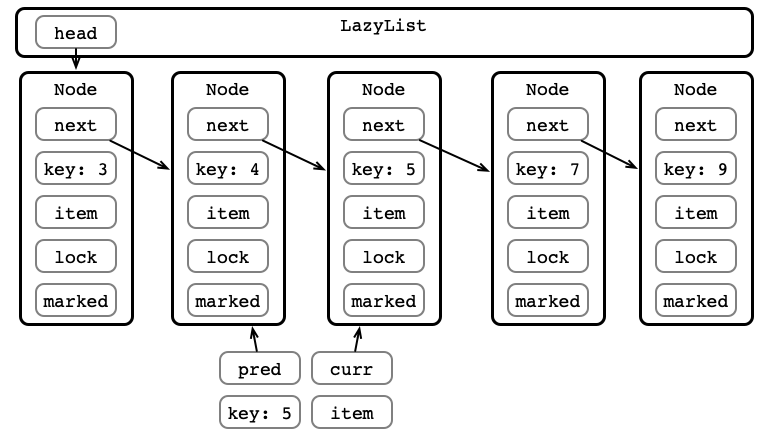
Step 2: Lock Nodes
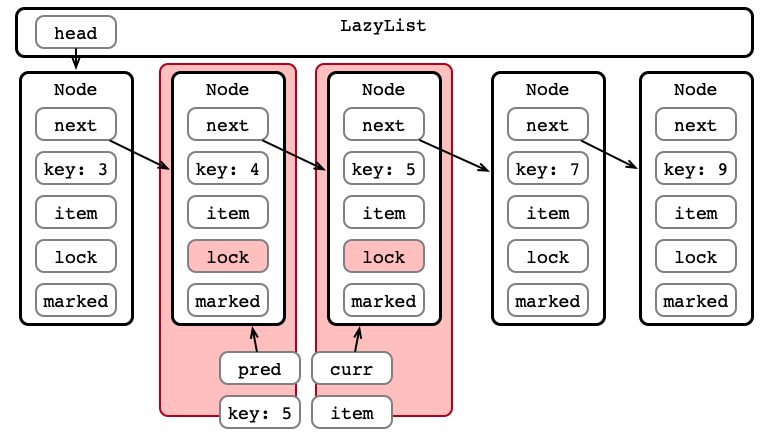
Step 3: Validate pred.next == curr?
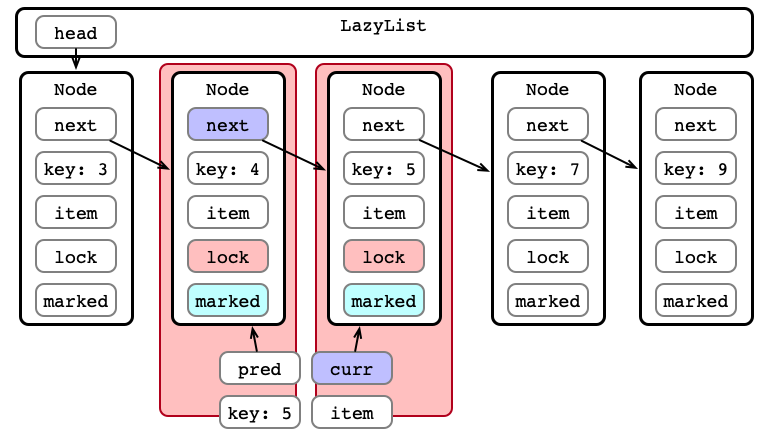
Step 3: Validate not marked?

Step 4a: Perform Logical Removal
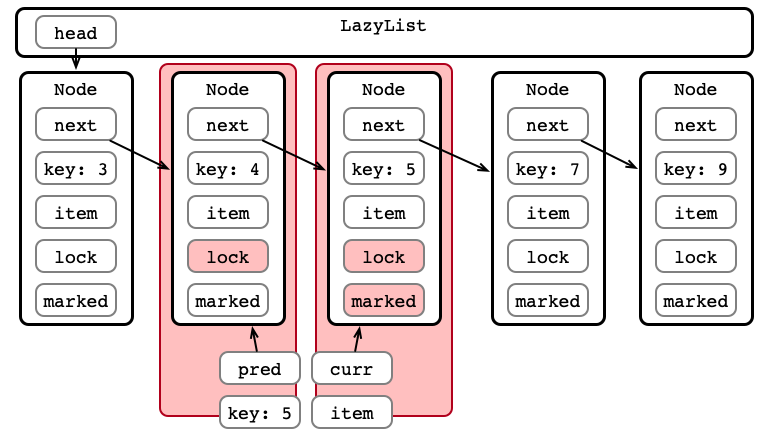
Step 4b: Perform Physical Removal
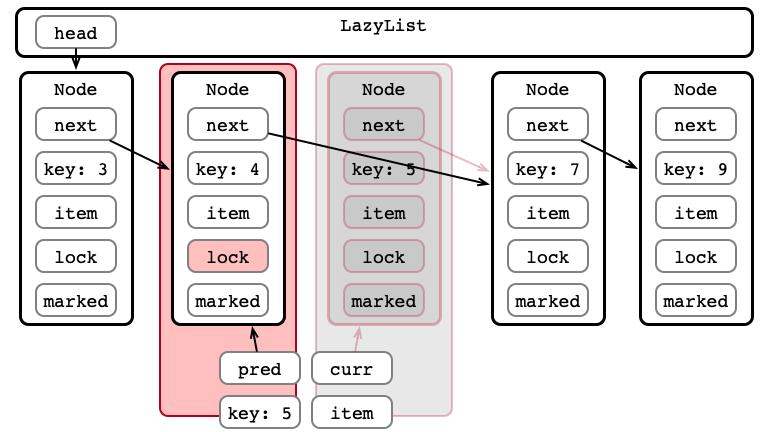
Step 5: Release Locks and Done!
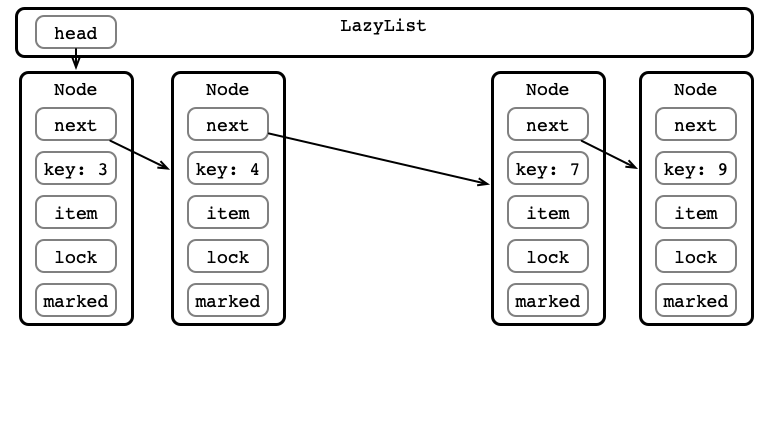
In Code
-
LazyList.javainlinked-lists.zip
A Node in Code
private class Node {
T item;
int key;
Node next;
Lock lock;
volatile boolean marked;
...
}
Validation, Simplified
private boolean validate (Node pred, Node curr) {
return !pred.marked && !curr.marked && pred.next == curr;
}
Improvements?
- Limited locking as in optimistic synchronization
- Simpler validation
- faster—no second list traversal
- more likely to succeed?
- Logical removal easier to reason about
- linearization point at logical removal line
-
contains()no longer acquires locks- often most frequent operation
- now it is wait-free!
What About Performance?
Performance v. Size, 1 Thread
Performance v. Size, 128 Threads
Time v. Threads, 8 Elements
Time v. Threads, 8,192 Elements
Further Improvements?
What could be done better?
- concurrent
add/removeoperations can still block one another - operations are still not starvation free
Question. Can we avoid locks entirely?










